
|
|
|
|
|
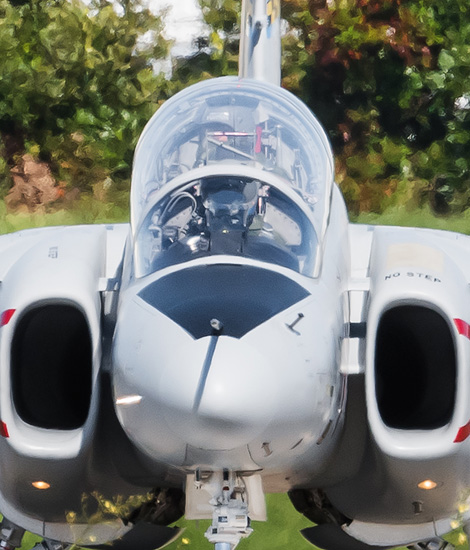
|
The Advanced Pilot Training; Hamamatsu, November 1, 2019
The Japanese Pilot School, part 2; Text and Photograph's by Alex van Noye
The Japanese advanced pilot training takes place at Hamamatsu Air Base. For this training, the 1st Air Wing has the Kawasaki T-4 Jet Trainer to train the students. Students will be judged at Hamamatsu Air Base whether to continue on the fighter planes or whether to continue on another type of Japanese Air Force.
Hamamatsu Air base is located in the south of the Japanese main island of Honshu. The 1st Air Wing of the Japan Air Self Defense Force (JASDF) is based on this airbase. This wing is one of the most important training wings in Japan and is currently equipped with the Kawasaki T-4 jet trainer. The T-4 units under this wing are the 31 Kyoiku Hikotai (31st Training Squadron) and the 32 Kyoiku Hikotai (32st Training Squadron). These units can be recognized by the black and yellow checkered tail band on the T-4. The only difference is that the planes of the 31 Hikotai have a blue tail band and the planes of the 32 Hikotai have a red tail band. In addition to the 1st Air Wing, Hamamatsu also houses the technical school Hiko Kyoiku Kokutai (Air Training Group). Here all technicians receive their training and they work on almost all types of the JASDF that are here as instruction aircraft in the school. The 1st Air Wing at Hamamatsu was established on December 1, 1955. The unit was then provided with a number of F-86F Sabers. From January 30, 1969, the unit also had access to several T-33 T-Bird aircraft. The T-33 was to take over the duties of the F-86F and was eventually withdrawn from service in 1971. It became increasingly clear that the 1st Air Wing had a training role in flying operations with the T-Bird. However, it would take until 1989 for this unit to take on full training duties. With the introduction of the Kawasaki T-4, the unit was not formally assigned this task until March 16, 1989. Since then, the T-4 has been the primary jet trainer of the JASDF.
The Kawasaki T-4 is a Japanese subsonic intermediate jet trainer and is the primary jet trainer of the JASDF. The aircraft was developed and produced by the aircraft manufacturer Kawasaki Heavy Industries. The only user in the world of the T-4 is the JASDF. This is largely due to the historical restrictions on the export of military hardware such as aircraft. In addition to the primary training mission, the Kawasaki T-4 is also used by the JASDF display team Blue Impulse. The aircraft is also used by
|
|
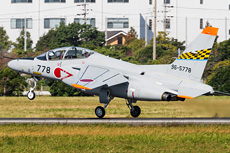
|
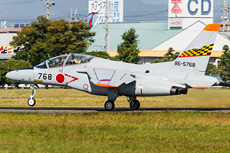
|
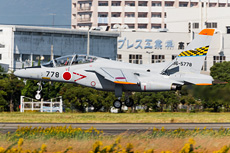
|
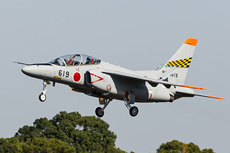
|
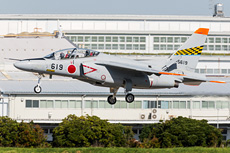
|
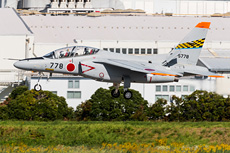
|
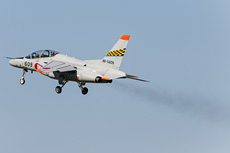
|
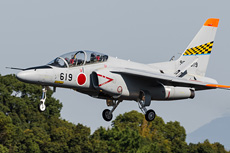
|
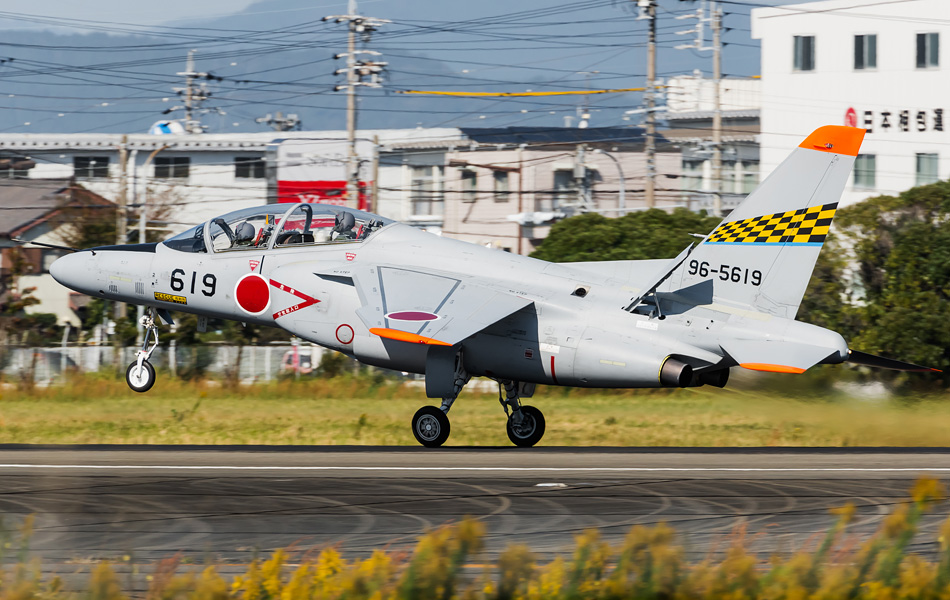
|
combat units as a liaison aircraft for the so-called base flight. The first XT-4 prototype first flew on July 29, 1985. The first production model of the T-4 was delivered to the JASDF in September 1988. In November 1981, Kawasaki was selected as prime contractor to design and manufacture a suitable trainer for the JASDF. The MT-X program was launched to purchase a replacement for the obsolete Lockheed T-33 T-Bird and Fuji T-1. The original program included a production number of 220 aircraft. The new trainer also had to meet some basic requirements. For example, the aircraft had to be easy to operate, because at that time students wanted to transfer from the T-3 to the T-4. The students who would start their training on the T-4 had only 70 flying hours experience on the T-3. Ultimately, the current T-4 came from the program. The aircraft was a domestically developed trainer aircraft. Due to its high price, the T-4 was ultimately unable to compete with jet trainers from other countries for eventual export. The JASDF is therefore the sole user of the Kawasaki T-4.
On July 29, 1985, the prototype XT-4 made its maiden flight. The Air Proving Wing test pilots at Gifu noted that the type had greater subsonic maneuverability than the McDonnell Douglas F-15 Eagle. Flight testing of the four XT-4 prototypes ended after two and a half years with approximately 500 flights being made. On June 28, 1988, the first production T-4 made its maiden flight. Deliveries to the JASDF began in September of that year. The T-4 was manufactured by a consortium consisting of Mitsubishi, Fuji and Kawasaki. The assembly line for this type was established at the Kawasaki factory at Gifu Air Base. The Kawasaki T-4 is a twin-engined aircraft powered by a pair of Ishikawajima-Harima F3-IHI-30 turbofan engines. These engines are capable of generating up to 3,520 lb of thrust. The performance of the T-4 is comparable to several widely exported jet trainers such as the Franco-German Dassault/Dornier Alpha-Jet and the British BAE Systems Hawk. In particular, the T-4 had a lower wing loading and a 20 percent greater thrust-to-weight ratio than any of these aircraft. Despite no combat version being developed so far, the standard T-4 has three suspension points, allowing for the installation of various air-to-air missiles, bombs and a cannon pod. The T-4s avionics are completely digital.
The pilots who arrive at Hamamatsu for their studies have already traveled quite a bit before they start training at this base. The pilots have already passed their theory at the various defense academies and have subsequently completed the elementary “Introductory Pilot Course” at Hofu Air Base or Shizuhama Air Base. After the training, the students also completed the "Basic Pilot Course" at the 13th Flight Education Corps at Ashiya Air Base. On this basis, the students had their first experiences flying the Kawasaki T-4. The pilots at this stage are capable of flying a jet such as the T-4. During the training at Hamamatsu, the students will be trained to become fighter pilots for the first time. During the Battle Fighter Pilot Course at the 1st Flight Education Corps, the pilots go through one very important phase. During the one-year training at Hamamatsu, it is determined whether the pilots will eventually become a fighter pilot or whether they will transfer to another type at the JASDF, such as the transport aircraft. Those who complete the second semester of this training will receive their wings and become an official pilot with the JASDF. The students who go on to become fighter pilots continue their way to the Battle Fighter Pilot Course. After this step in training, pilots will move to the 4th Air Wing at Matsushima Air Base if training for the Mitsubishi F-2 and to the 23rd Flight Education Air Corps at Nyatubaru if continuing on the F-15 Eagle. The students who will go to the larger aircraft types will move to Miho Air Base to continue their education there. In short, for the students, their period at Hamamatsu is decisive in their career at the JASDF.
|
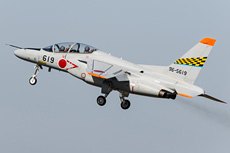
|
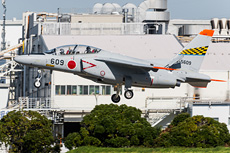
|
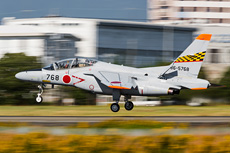
|
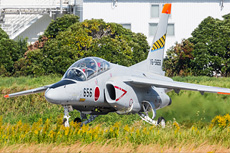
|
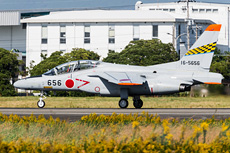
|
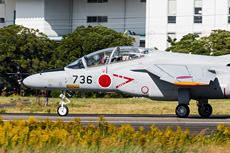
|
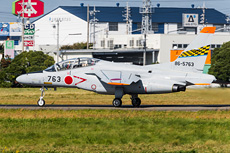
|
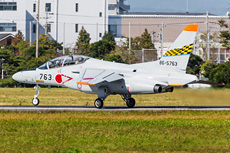
|
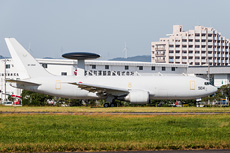
|
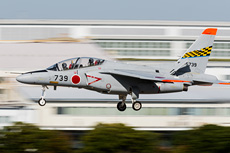
|
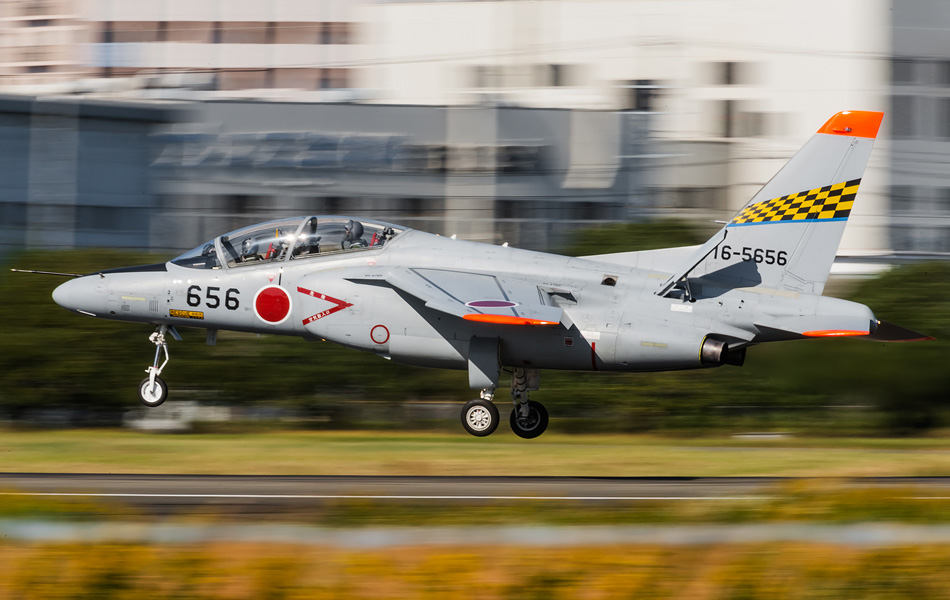
|
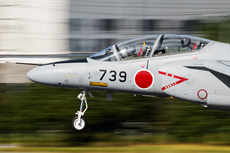
|
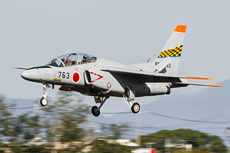
|
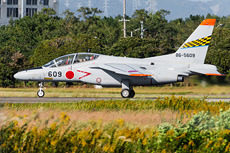
|
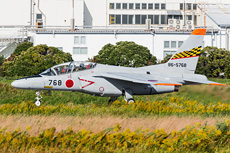
|
|
|

|







